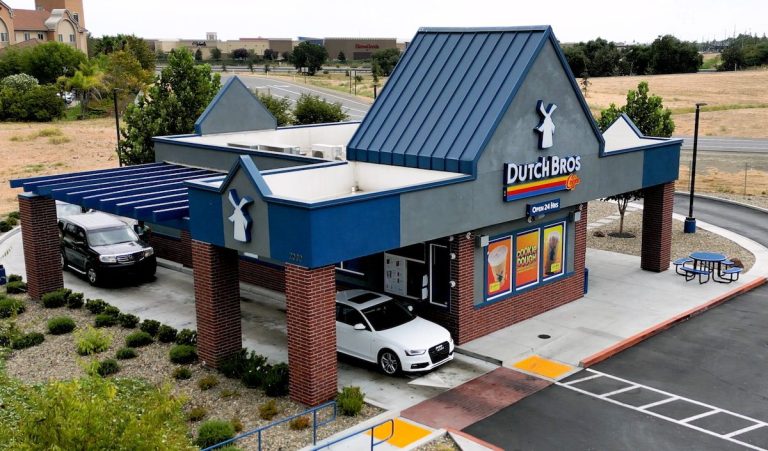Dutch Bros, Starbucks Report Drive-Thru Gains While McDonald’s Sees Weakness

Across the restaurant industry, brands including Dutch Bros and Starbucks are seeing their drive-thru sales increase, with the stark exception of quick-service restaurant (QSR) giant McDonald’s, a leader in the drive-thru space.
McDonald’s, which as of 2019 had more than 20,000 drive-thru locations around the world, and order of magnitude more than Starbucks and Dutch Bros’ drive-thru presence combined, is seeing its drive-thru business normalizing after spiking during the pandemic.
“Drive-thru is basically back to what it was pre-COVID in terms of percentage of sales,” Chief Financial Officer Ian Borden said on an earnings call last month.
Yet, drive-thru coffee chain Dutch Bros’ drive-thrus are thriving. In its third-quarter earnings report Wednesday (Nov. 9), the brand noted that revenues increase more than 50% year over year in the quarter, and same-store sales saw a modest increase, 2%.
Similarly, point-of-sale (POS) software company Par Technology noted Wednesday, in discussing its Q3 financial results, that it has seen strength in the drive-thru channel. With its tech presence in more than 18,500 restaurant locations, the company has wide-ranging insight into current restaurant ordering trends.
“[Our] Brink [restaurant POS system] released new drive-thru features to support the increased traffic that our brands have experienced,” Par CEO Savneet Singh told analysts on a call.
Moreover, Starbucks, the world’s largest restaurant brand by revenue, has been seeing increased demand for drive-thru. On a call with analysts Nov. 3, interim CEO Howard Schultz discussed “how accretive drive-thrus have been,” and Sara Trilling, executive vice president and president of Starbucks North America, noted “improvement during peak in our drive-thru business.”
It is difficult to explain these disparate accounts of drive-thru performance. The discrepancy could suggest that McDonald’s is slipping when it comes to maintaining its drive-thru quality, but a study of wait times across major brands found that McDonald’s provides one of the most efficient experiences.
Consequently, it is possible that McDonald’s is seeing the shift away from drive-thru sooner than its competitors that have less of a presence in the category.
Notably, the availability of drive-thrus has been on the decline, according to data from this year’s edition of PYMNTS’ Restaurant Readiness Index, which drew from a survey of more than 500 United States QSR and full-service restaurant managers. The share of restaurants offering drive-thru lanes with self-service kiosks dropped from 16% in September 2021 to just 9% in April 2022. Plus, the study also found that the share with drive-thru lanes where consumers order by speaking with employees dipped four points down to 27%.
Yet, an increasing variety of restaurants are adding drive-thru lanes, expanding the service mode beyond the QSR and even fast-casual categories.
“There’s a ton of press of people wanting more drive-thru,” Rajat Suri, founder and CEO of voice, vision and touch automated technology firm Presto, told PYMNTS’ Karen Webster in an interview. “The funny thing is casual dining is now experimenting with drive-thrus. … It makes a lot of sense for them to have that flexibility and that option.”
He cited the examples of QSR Panda Express, fast-casual giant Chipotle, casual dining chain Applebee’s and even convenience retailer Wawa as major brands that previously had no designs on the channel that have recently been investing in new drive-thru capabilities.

